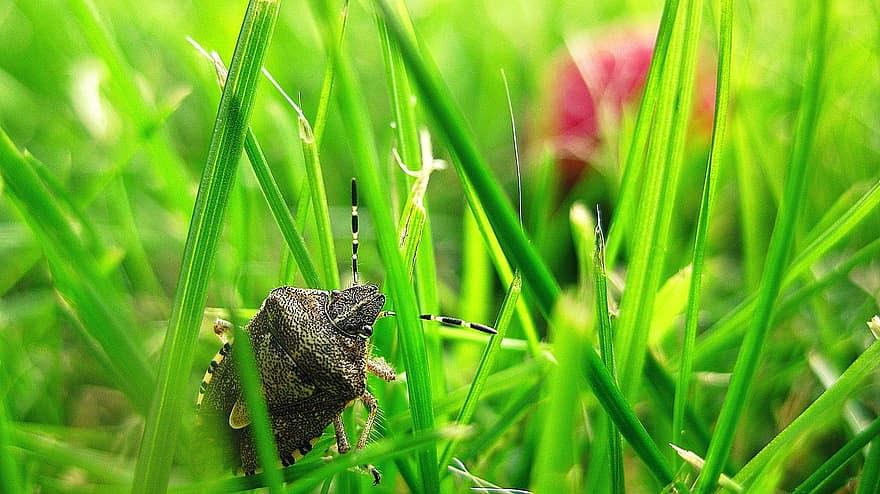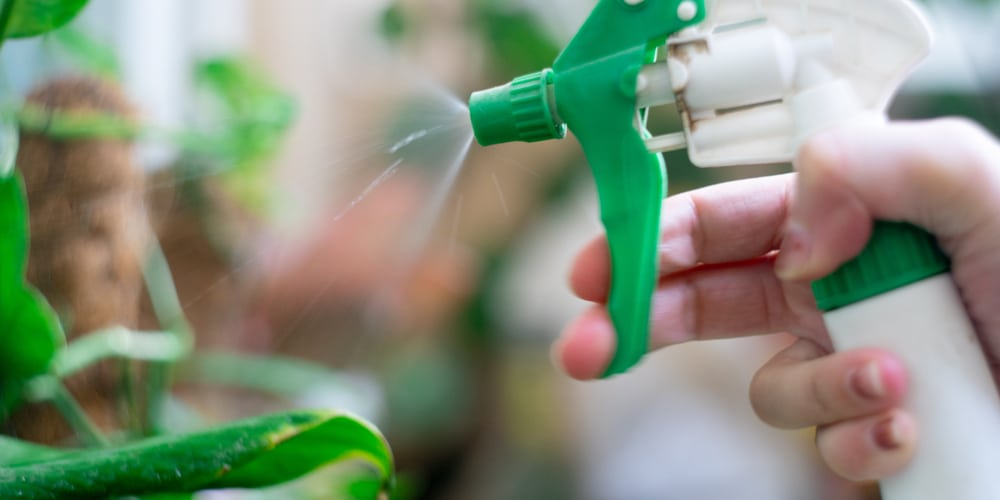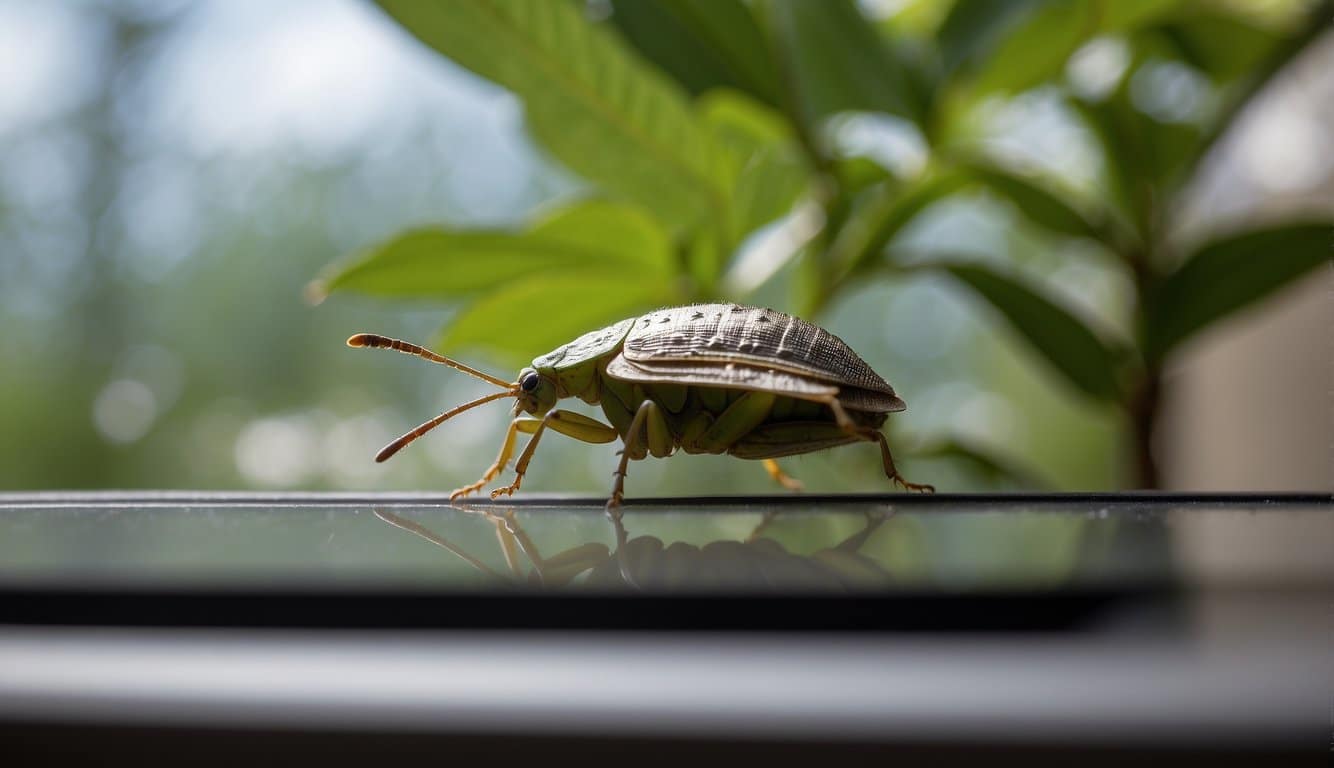Decision Tree for Getting Rid of Stink Bugs
Step 1: Identify the Problem
- Question: Have you seen stink bugs in your home?
- Yes: Proceed to Step 2.
- No: Regularly inspect your home during the fall and spring when stink bugs are most active.
Step 2: Seal Entry Points
- Action: Prevent stink bugs from entering your home.
- Areas to Check: Windows, doors, siding, utility pipes, behind chimneys, and underneath the wood fascia.
- Sealing Methods: Use silicone-based caulk to seal any cracks and gaps. Install door sweeps and repair damaged screens.
Step 3: Vacuum Bugs
- Action: Remove visible stink bugs.
- Method: Use a vacuum cleaner to capture stink bugs. Immediately dispose of the vacuum bag or empty the canister outside to prevent odor inside your home.
Step 4: Use Deterrents
- Question: Do you prefer to use natural deterrents?
- Yes: Implement natural methods.
- Options:
- Diatomaceous Earth: Apply around windowsills and doorways.
- Garlic Spray: Mix water and garlic powder and spray around entry points.
- Options:
- No: Consider chemical repellents.
- Yes: Implement natural methods.
Step 5: Deploy Light Traps Indoors
- Action: Use light traps in dark areas where stink bugs gather.
- Placement: Attics, basements, and crawl spaces. Use at night when these bugs are more active.
Step 6: Reduce Outdoor Attraction
- Action: Make your home less inviting.
- Landscaping Tips:
- Lights: Turn off outdoor lights or use yellow bulbs that are less attractive to stink bugs.
- Yard Maintenance: Keep the yard clean and reduce debris where stink bugs can breed or hide.
- Landscaping Tips:
Step 7: Apply Insecticides
- Question: Are stink bugs a persistent problem?
- Yes: Use insecticides as a last resort.
- Recommended Products: Use perimeter insecticides around the foundation of your home and near entry points. Follow the manufacturer’s instructions and precautions.
- No: Continue with preventative measures.
- Yes: Use insecticides as a last resort.
Step 8: Professional Pest Control
- Question: Is the infestation large or difficult to manage?
- Yes: Consider hiring a professional pest control service.
- No: Maintain current measures and monitor for any new activity.
Step 9: Regular Monitoring and Maintenance
- Routine Actions:
- Check Seals: Regularly inspect and maintain seals around the house.
- Monitor Activity: Keep an eye on previously affected areas and act quickly if stink bugs reappear.
Additional Tips
- Be proactive in the early fall before stink bugs start looking for winter shelter.
- Avoid squashing stink bugs to prevent releasing their odor.
Identifying Stink Bugs
Before you begin your battle against these unwelcome guests, it’s crucial to know what you’re up against.
Stink bugs are distinguishable by certain features:
- Shield Shape: Their bodies have a distinctive shield-like shape that makes them easily recognizable. The sides are almost triangular, coming to a point at the rear.
- Size: They’re not gigantic invaders; expect them at about 3/4 inch long.
- Color: The most common stink bugs are mottled brown, but they can also be greenish or grayish. No fancy colors or patterns here—nature’s own camo!
- Legs: Six legs extend from the sides, giving them a decent grip on many surfaces.
- Antennae: Look for their straight antennae with light bands, a small but telltale feature.
Don’t let their quiet demeanor fool you; when disturbed, these bugs live up to their name by releasing a less-than-pleasant scent. This is their defense mechanism, and believe me, it works. But worry not, your nostrils are safe for now—identification is a scent-free process.
Here’s a quick cheat sheet:
| Feature | Description |
|---|---|
| Body Shape | Shield-like |
| Size | Approx. 3/4 inch long |
| Color | Mottled brown, greenish, gray |
| Legs | Six legs |
| Antennae | Straight with light bands |
Remember, spotting them correctly is the first step in your quest to reclaim your peaceful, bug-free haven.
Natural Repellents
When dealing with stink bugs, it’s crucial to choose repellents that are effective yet safe for your home and garden.
There are several natural options that can be utilized to deter these pesky invaders with minimal impact on the environment and your health.
Essential Oils
Stink bugs have a distaste for certain scents, making essential oils a powerful tool in your repellent arsenal.
You can create a deterrent using:
- Peppermint oil: A few drops mixed with water can be sprayed around entry points.
- Tea tree oil: When diluted, it acts as a strong repellent due to its potent smell.
A study on natural insect repellents supports the effectiveness of certain essential oils against a variety of pests.
Diatomaceous Earth
Diatomaceous earth, a naturally occurring sediment, can be utilized as a physical barrier to control stink bugs.
Remember to:
- Sprinkle a thin layer around the perimeter of your house.
- Apply it dry, and avoid moisture as it can reduce its efficacy.
Soapy Water
This simple yet powerful mixture could be your first line of defense against stink bugs:
- Mix liquid dish soap with water in a spray bottle.
- Spritz it directly onto stink bugs or places where they congregate.
Soapy water has a track record of being an accessible and non-toxic option for immobilizing and eliminating stink bugs.
Manually Removing Them
When your home is threatened by stink bugs, mechanical strategies offer hands-on solutions to reduce their presence without the use of chemicals. Let’s explore these tactical maneuvers!
Vacuuming
- Grab your vacuum cleaner to quickly remove stink bugs from your walls and windows.
- Immediately dispose of the vacuum bag or empty the canister into soapy water to prevent escape and odor.
Sealing Entry Points
- Inspect your home and seal cracks or openings with caulk or weather stripping.
- Pay special attention to areas around windows, doors, siding, utility pipes, and behind chimneys—these are prime entry points for stink bugs seeking shelter.
Chemical Solutions
When stink bugs stage an invasion, it’s time to stand your ground with some effective chemical solutions. Forget the folk remedies for a moment; here’s how you can show those pesky bugs they’re not welcome:
- Insecticides: Your local garden store is a goldmine for bug-battling sprays. Look for products containing deltamethrin, which is a synthetic insecticide known to send stink bugs packing.
- Use with caution: Always read and follow the label for safe application.
- Pyrethroids: These are synthetic chemical compounds that mimic the insecticidal properties found in chrysanthemums. Seriously, bugs hate these.
- Example brands: You might find bifenthrin or cypermethrin on the shelf.
- Spray tactically: Apply on the outer façade of your home, especially around windows and doors.
Indoor Use:
| Insecticide | Safe for Indoors | Notes |
|---|---|---|
| Cyfluthrin | Yes | Great for cracks and crevices. |
| Lambda-Cyhalothrin | No | Reserved for outdoor use only. |
| Permethrin | No | Don’t go spraying this inside—keep it for external defenses. |
- Caution: When using any of these chemicals, you need to protect yourself. Wear gloves, a mask, and keep your space ventilated.
Ongoing Prevention and Maintenance
To ensure stink bugs don’t turn your home into their playground, incorporate these prevention tips with a dash of diligence and a sprinkle of attentiveness:
- Seal Them Out: Grab your caulking gun and weather stripping foam tape. It’s time to close the theme park’s gates! Check out these handy tips on sealing up cracks.
- Windows and doors
- Utility boxes
- Vents and screens
- Lighting Attraction: Did you know stink bugs are like moths to a flame with lights? Swap out your bright exterior bulbs for dimmer, yellow-tinted ones to throw them off your trail.
- D.I.Y. Defense: Mix up your own stink bug repellent using water and a bit of liquid soap. Spray them with your concoction and bid them adieu. Want to know how? Click here.
- Landscaping Lures: Keep your greenery trimmed and tidy. Overgrown bushes and weeds are like luxury apartments for stink bugs.
- Vigilance is Key: Regularly inspect your home’s exterior for stink bug gatherings – they’ll be less likely to crash your indoor party.
Frequently Asked Questions
Stink bugs can be a pesky issue, but with the right strategies, you can keep your home bug-free and your gardens thriving. Here’s how to tackle them with practical steps and natural solutions.
What are the effective methods to prevent stink bugs from entering the home?
Seal up cracks and openings in your home’s exterior to deter stink bugs from getting inside. Ensure that doors and windows are properly fitted with screens and weather-stripping.
Which natural remedies help in repelling stink bugs without harming the environment?
Implementing a dish soap solution can be an effective eco-friendly option. Additionally, keeping gardens clean and removing weeds may naturally reduce stink bug populations.
Can essential oils be utilized to deter stink bugs, and if so, which ones?
Yes, essential oils like mint can act as a natural deterrent for stink bugs. A few drops in a spray bottle filled with water can create an effective repellent spray.
What immediate actions can be taken to eliminate stink bugs in the house?
Upon spotting stink bugs indoors, gently sweep them into a container filled with soapy water. This soapy water trap will cause them to drown.
Are there any foolproof DIY stink bug traps that can be easily made at home?
You can fashion a DIY trap using a light source placed over a pan filled with soapy water. Stink bugs are attracted to light and will fall into the pan and be unable to escape.
What garden practices discourage stink bug infestations among plants?
Keep your garden tidy by clearing away debris and dead leaves where stink bugs may hide.
Companion planting with chrysanthemums or marigolds can help dissuade stink bugs from settling in your plants.
Last update on 2025-04-19 / Affiliate links / Images from Amazon Product Advertising API





